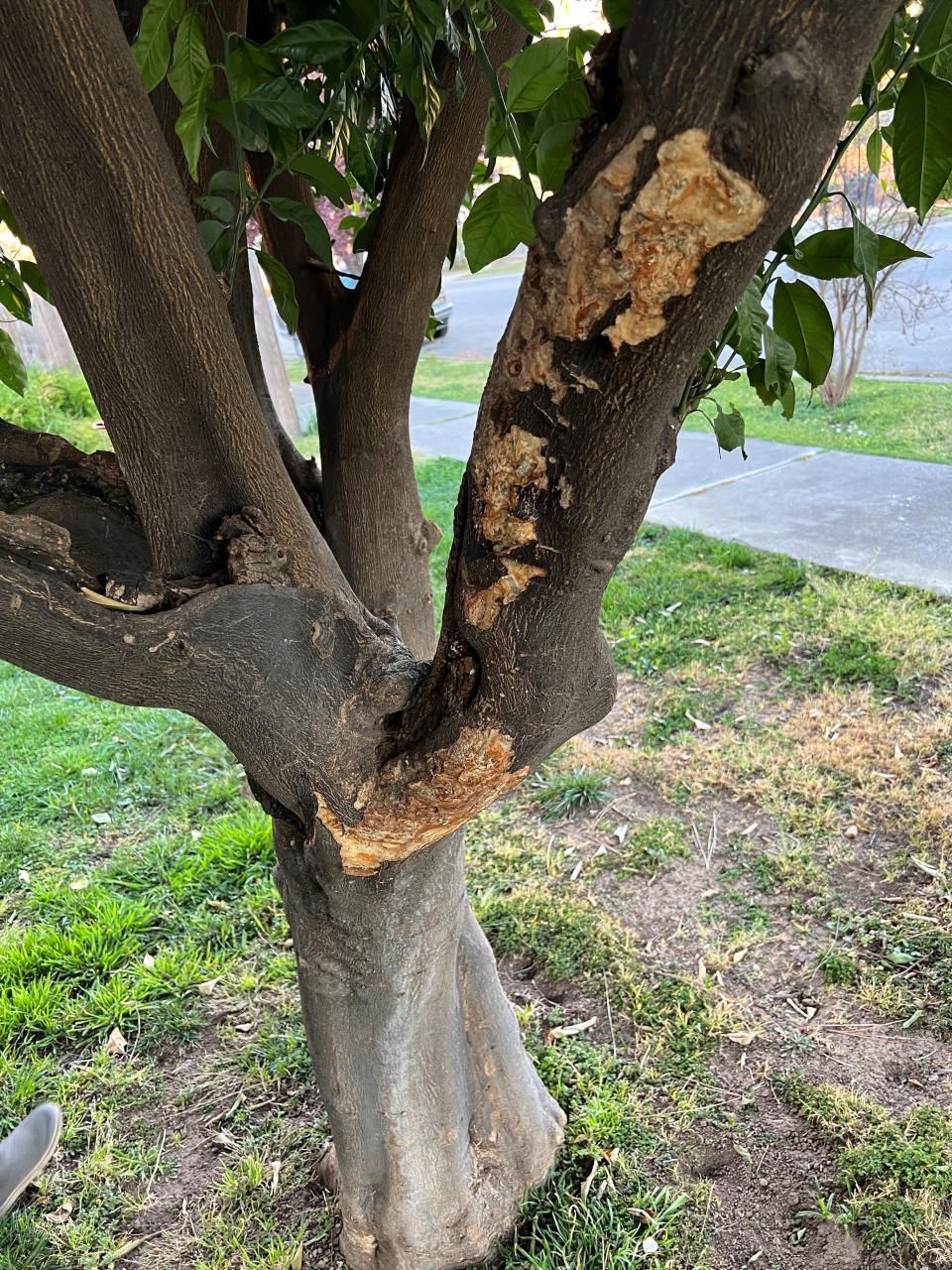Why are my orange trees missing bark, oozing sap?

Q: I recently purchased a home with several mature navel orange trees. One of the trees has about half the bark missing from the trunk and sort of circular looking lesions that ooze sap in the area missing the bark (see the photos I have included). Any advice would be very welcome. The tree seems to have produced plenty of fruit this winter.
A: Based on the photos, it appears that your citrus tree may have one of two diseases: Phytophthora gummosis or Psorosis. Because you mentioned oozing sap and missing bark, I am leaning toward the cause of the damage to be Phytophthora gummosis. Oozing sap and sloughing bark are typically signs of this fungal disease. While Psorosis typically causes the bark to pimple and then scale off. However, as Psorosis develops it can also result in oozing sap. Both diseases may lead to the decline of the tree's health. Below is information about both diseases.

Phytophthora gummosis: This disease is caused by a fungus and is spread during warm, moist conditions, so it is best to provide irrigation water directly to the ground, rather than overhead sprinkling. We suggest bubblers, drip line or a soaker hose on a timer to apply water to the root zones of your trees. Damage to the trunk (gummosis) occur when zoospores splash onto a wound or bark crack around the base of the trunk. Mulching around all trees, and refreshing the mulch every year, can help keep this fungus from spreading to other citrus trees or reinfections to this tree.
The University of California Integrated Pest Management site suggests removing the bark of the infected area back to healthy bark and allowing the area to dry out. Recheck it every few months and repeat the procedure if necessary. Here is a link to the University of California Integrated Pest Management site for more information: https://www2.ipm.ucanr.edu/agriculture/citrus/Phytophthora-Gummosis/

Psorosis: This is a virus that typically occurs when the scion is grafted to the rootstock. This disease affects mostly orange and grapefruit trees that have been grafted. It causes trees to slowly decline. Once the main scaffold branches die, the trees become unproductive. The most distinguishing symptom of Psorosis is scaling and flaking of the bark on the scion part (part above the graft union) of the tree. Symptoms, including yellowing between the veins of young leaves, may first appear in fall. In the early stages of this virus, patches of bark on the trunk or main branches develop small pimples or bubbles, later these enlarge and become loose scales, causing the bark to fall. Gumming often appears around the margins of one of these scaly lesions. As the disease advances, deep layers of bark and the wood on the trunk and main branches become impregnated with gum and die. Most tree infected with Psorosis will be less productive than healthy trees, and there is not much you can do to manage the disease, other than make sure that the tree has plenty of water and fertilizer. In general, the infected trees are short lived and less productive than a virus-free tree. Below are two links for more information on this disease.
The Shasta Master Gardeners Program can be reached by phone at 530-242-2219 or email mastergardener@shastacollege.edu. The gardener office is staffed by volunteers trained by the University of California to answer gardeners' questions using information based on scientific research.
This article originally appeared on Redding Record Searchlight: Why are my orange trees missing bark, oozing sap?

